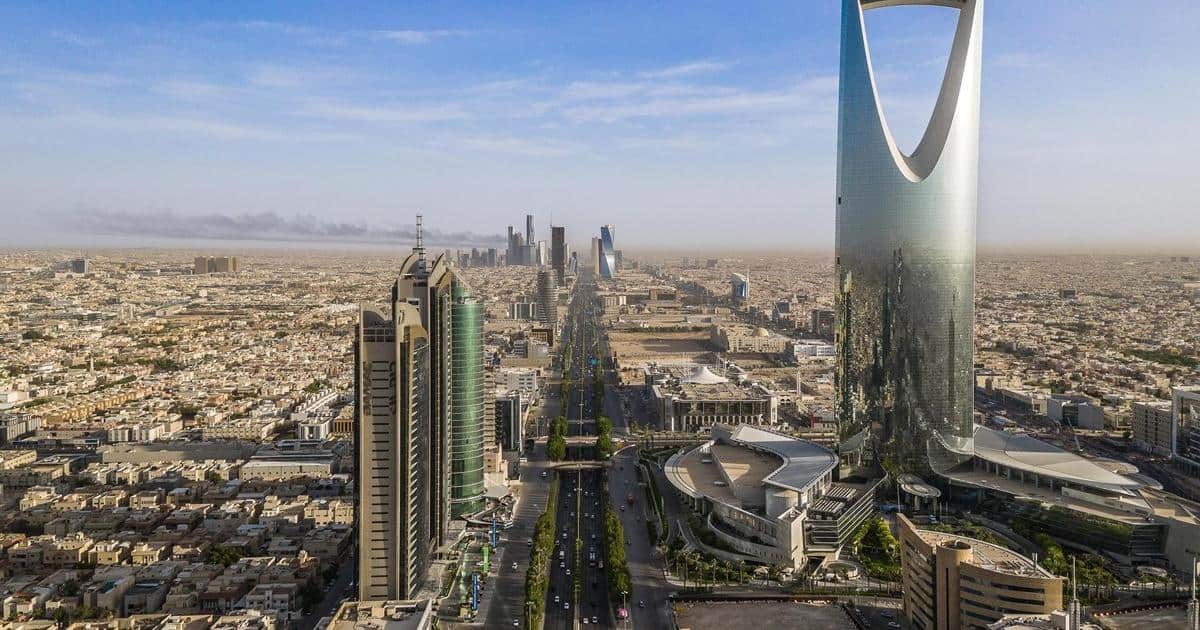Dubai, UAE–Saudi Arabia has been engaged for some time now in the reform of its economy in keeping with the kingdom’s Vision 2030.
Saudi Vision 2030 is a strategic framework to reduce the kingdom’s dependence on oil, diversify its economy, and develop public service sectors such as health, education, infrastructure, recreation, and tourism.
And to fulfill this aim, it has made the Public Investment Fund (PIF) the main catalyst for the kingdom’s economic transformation.
According to a report by S&P Global Rating, the Public Investment Fund (PIF) has US$620 billion of assets under management and is a catalyst for Saudi Arabia’s economic transformation.
The fund has identified 13 strategic sectors to prioritize to best support the national economy.
These are aerospace and defense; automotive; transport and logistics; food and agriculture; construction and building components and services; entertainment, leisure, and sports; financial services; real estate; utilities and renewables; metals and mining; health care; consumer goods and retail; and telecom, media and technology.
To fulfil Vision 2030, PIF and its portfolio companies aim to help grow Saudi Arabia’s annual non-oil GDP by about 7 percent. PIF’s latest five-year strategy is to:
- Invest a minimum of US$40 billion annually in domestic projects and investments.
- Contribute US$320 billion to non-oil GDP cumulatively through its portfolio companies.
- Increase AUM to more than US$1.07 trillion; and
- Create 1.8 million direct and indirect jobs by the end of 2025.
On the other side, Vision 2030 includes several ambitious goals and investment expectations. Its key goals are:
- Raising the private sector’s contribution to GDP to 65 percent (40 percent currently).
- Increasing the contribution of FDI to GDP to 5.7 percent (from 3.8 percent).
- Increasing the contribution of non-oil exports to GDP to 50 percent (from 16 percent).
- Reducing the unemployment rate to 7 percent (9.7 percent as of Q2 2022); and being among the top 10 competitive economies in the world.
Saudi Arabia’s fiscal outlook will be driven by Vision 2030, with PIF and other government agencies setting the pace of investment, followed by private local companies.
According to S&P, investments will likely remain relatively high as a percentage of GDP, and efforts to drive non-oil growth through foreign direct investment (FDI) and mega projects should also contribute to GDP growth.
It also revealed that high oil prices aided Saudi Arabia’s strong recovery in 2022, but growth will slow in 2023 due to OPEC+ supply cuts.
Aside from high oil prices, increased oil production and strong non-oil momentum also contributed to the economy’s growth in 2022. According to the General Authority for Statistics’ flash estimates, GDP increased for the sixth consecutive quarter, growing 8.6 percent year on year in the third quarter of 2022.
Saudi Arabia is expected to become one of the world’s fastest-growing large economies with estimations that fiscal surpluses will return to 6.3 percent of GDP in 2022 and 3.5 percent in 2023.
In addition to the above, Saudization and women’s participation in the workforce present opportunities for economic growth, with new jobs to be created under Vision 2030.
The total population was 34.1 million in mid-2021 of which males accounted for 56.8 percent of the total population and females 43.2 percent, however the expectations reveal that the population will expand as the number of Saudi nationals increases and more foreign workers arrive to support construction and infrastructure development.
The report expects the government to continue its ambitious Vision 2030 diversification program via investment in the non-oil economy; the “Saudization” of the workforce (replacing expatriates with Saudis); increasing female participation in the workforce; improving the business environment; and pursuing socioeconomic liberalization.
Vision 2030’s investment program continues to drive funding requirements, while the authorities are also pushing to deepen local debt and equity markets and increase FDI.
The Saudi Stock Exchange, Tadawul, is the largest equities market in MENA by market capitalization and trading volumes. The 2019 Saudi Aramco IPO was a major step, and we have since seen several Saudi entities tap the equities market.
This year, 15 companies have undertaken an IPO and raised around $7 billion while 16 companies have done so on the parallel market (Nomu) raising $3 billion.
According to S&P, Saudi debt markets, like those around the world, have been less active due to concerns about rising interest rates and inflation, but they anticipate positive long-term issuance trends.
Indeed, the scale of proposed investments, particularly from the corporate sector, will necessitate debt issuance as a complement to the banking sector and a means of attracting foreign debt investors.
This represents a significant shift for Saudi corporations, which are currently reliant on the banking sector or other direct/indirect government funding.
Furthermore, in accordance with Financial Sector Development Program directives, Tadawul is working to diversify the industries represented on the stock exchange.
It is collaborating with the Saudi Capital Market Authority to improve market functionality and efficiency, expand access, strengthen corporate governance, and increase transparency in order to attract local and international issuers.
This corresponds to Vision 2030’s goal of establishing a sophisticated and advanced capital market.

